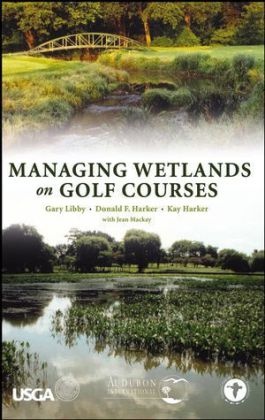Read more
Informationen zum Autor GARY LIBBY is an ecologist with EcoTech, Inc., of Frankfort, Kentucky. DONALD F. HARKER is cofounder and President of Communities by Choice, in Bend, Oregon, an organization dedicated to advancing sustainable community development. KAY HARKER is manager of The Planning and Program Coordination branch of the Kentucky Department for Environmental Protection. JEAN MACKAY is director of educational programs at Audubon International, an environmental organization in Selkirk, New York. Klappentext The management of wetlands is often an area of uncertainty. This book instructs golf course superintendents on how to successfully manage different types of wetlands and also offers information on the fundamentals of conservation and restoration.* Covers general information about wetlands as well as the fundamental practices in restoration and conservation* Discusses seven types of wetlands with regard to management* Case studies provide a look at golf courses that currently manage wetlands successfully* Includes over fifty photographs providing a rich visual resource* Appendices provide contact and regulatory information about wetland management, creation and restoration Zusammenfassung The management of wetlands is often an area of uncertainty. This book instructs golf course superintendents on how to successfully manage different types of wetlands and also offers information on the fundamentals of conservation and restoration.* Covers general information about wetlands as well as the fundamental practices in restoration and conservation* Discusses seven types of wetlands with regard to management* Case studies provide a look at golf courses that currently manage wetlands successfully* Includes over fifty photographs providing a rich visual resource* Appendices provide contact and regulatory information about wetland management, creation and restoration Inhaltsverzeichnis Foreword. Preface. Acknowledgments. CHAPTER 1: Introduction to Wetlands. WHAT ARE WETLANDS? WHY ARE WETLANDS IMPORTANT? TYPES OF WETLANDS. Estuaries. Rivers, Streams, and Creeks. Lakes and Ponds. Marshes and Wet Meadows. Forested Wetlands. Shrub Wetlands. Bogs. CHAPTER 2: Conservation of Wetlands. IDENTIFYING AND PROTECTING NATURAL WETLANDS. Wetland Protection. INCORPORATING WETLANDS INTO MANAGED AREAS. Natural Landscaping. IMPORTANCE OF VEGETATION ZONES. TRANSITION TO THE TERRESTRIAL ENVIRONMENT. CHAPTER 3: Restoring and Creating Wetlands. WHAT IS WETLAND RESTORATION? Hydrology. Soils. Vegetation. Additional Suggestions. SITE PREPARATION. CHOOSING AND OBTAINING APPROPRIATE WETLAND PLANTS. DESIGN CONSIDERATIONS. ECOLOGICAL SUCCESSION. CONTROLLING EXOTIC SPECIES. WILDLIFE CONSIDERATIONS. CHAPTER 4: Structure, Biology, Restoration, and Management of Wetlands by Type. ESTUARIES. Physical Characteristics of Estuaries. Plants and Animals of Estuaries. Restoration and Management of Estuaries. Key Species by Region. RIVERS, STREAMS, AND CREEKS. Physical Characteristics of Rivers, Streams, and Creeks. Plants and Animals of Rivers, Streams, and Creeks. Restoration and Management of Rivers, Streams, and Creeks. Key Species by Region. LAKES AND PONDS. Physical Characteristics of Lakes and Ponds. Plants and Animals of Lakes and Ponds. Restoration and Management of Lakes and Ponds. Key Species by Region. MARSHES AND WET MEADOWS. Physical Characteristics of Marshes and Wet Meadows. Plants and Animals of Marshes and Wet Meadows. Restoration and Managemen...

